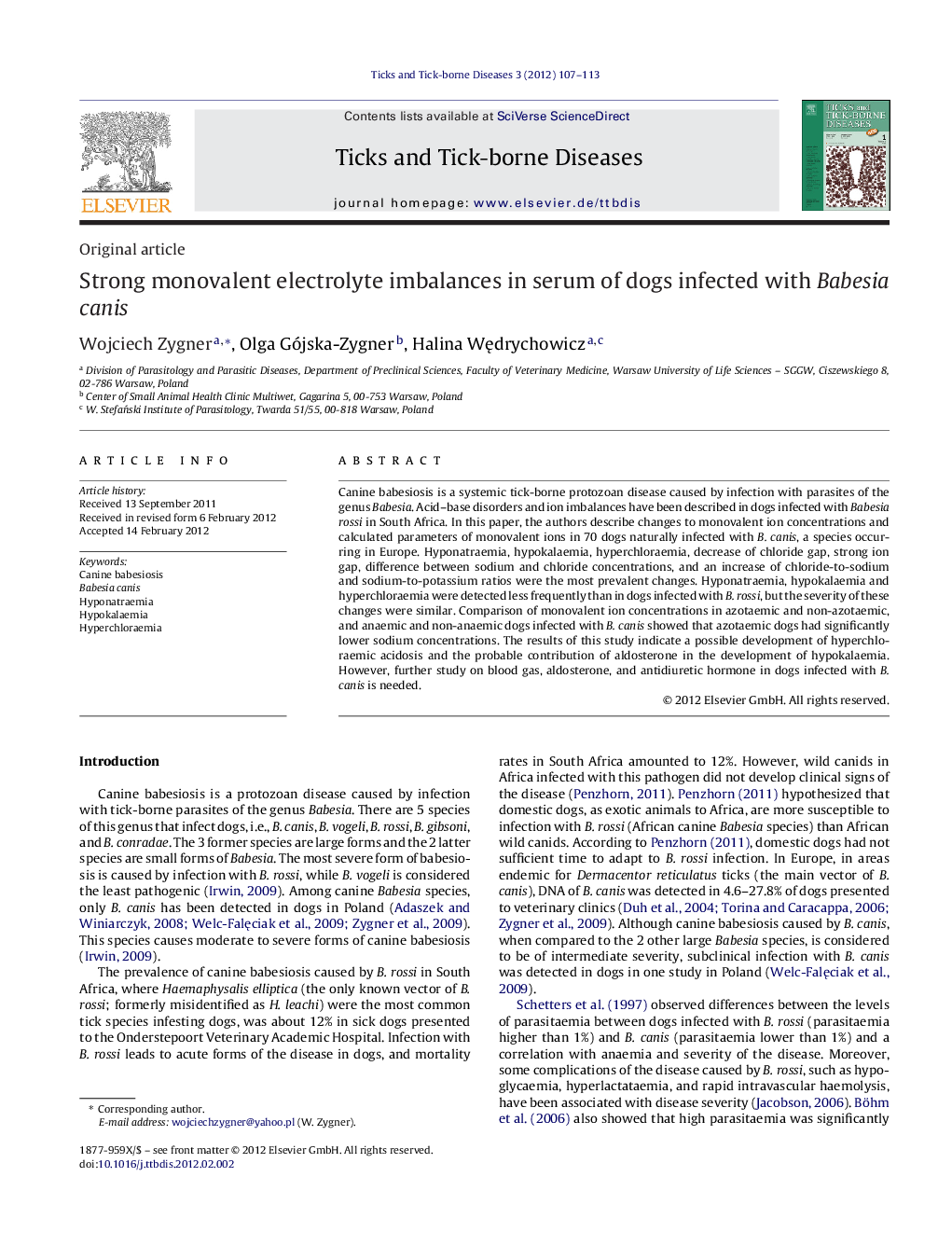| کد مقاله | کد نشریه | سال انتشار | مقاله انگلیسی | نسخه تمام متن |
|---|---|---|---|---|
| 2474274 | 1113129 | 2012 | 7 صفحه PDF | دانلود رایگان |

Canine babesiosis is a systemic tick-borne protozoan disease caused by infection with parasites of the genus Babesia. Acid–base disorders and ion imbalances have been described in dogs infected with Babesia rossi in South Africa. In this paper, the authors describe changes to monovalent ion concentrations and calculated parameters of monovalent ions in 70 dogs naturally infected with B. canis, a species occurring in Europe. Hyponatraemia, hypokalaemia, hyperchloraemia, decrease of chloride gap, strong ion gap, difference between sodium and chloride concentrations, and an increase of chloride-to-sodium and sodium-to-potassium ratios were the most prevalent changes. Hyponatraemia, hypokalaemia and hyperchloraemia were detected less frequently than in dogs infected with B. rossi, but the severity of these changes were similar. Comparison of monovalent ion concentrations in azotaemic and non-azotaemic, and anaemic and non-anaemic dogs infected with B. canis showed that azotaemic dogs had significantly lower sodium concentrations. The results of this study indicate a possible development of hyperchloraemic acidosis and the probable contribution of aldosterone in the development of hypokalaemia. However, further study on blood gas, aldosterone, and antidiuretic hormone in dogs infected with B. canis is needed.
Journal: Ticks and Tick-borne Diseases - Volume 3, Issue 2, April 2012, Pages 107–113